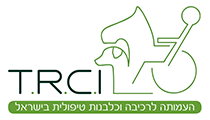A very characteristic expressions of anxiety in kids, is selective mutism – a situation in which a
child is unable to speak and communicate effectively in certain social settings. Why does this
happen and how can this be treated using canine assisted therapy?
What is Selective Mutism?
Selective Mutism is a phenomenon where a child who is capable of normal speech, doesn’t talk
for a month or more in social situations where he is expected to speak, such as at school or in the
company of adults. This disorder harms not only their social communication with their peers, but
also their academic achievements. Selective mutism is associated with social anxiety, when the
only communication that a child or a teenager has with his peers is through the computer or the
cellular phone. In this way children can lose their ability to read facial expressions, body
language and social codes.
Therapeutic dog training
The method of therapeutic dog training on the ranch, is based on the canine assisted therapy used
abroad. This model focuses on empowering the existing abilities of a child with the help of the
dog and the therapist. The child projects his difficulties onto the dog, saying for example, that the
dog is sad, when he himself feels sadness, and thereby manages to create a significant
relationship whereby he has control of the connection. The non judgmental therapeutic
environment enables the patient to feel confident and allows him to express himself and thereby
empowers the process of reversed roles between the patient and the dog, where the patient
becomes the therapist.
Today, the Center treats over 3000 children a year using Therapeutic Dog Training, amongst
them children who are dealing with many different difficulties, including attention disorders,
autism, social anxieties etc. All of the therapists at the ranch are graduates of the professional
course for Canine Assisted Therapy.
Case Studies – Dealing with Selective Mutsim with the help of Canine Assisted Therapy
Liat Sharon is a senior instructor at the center and intern coordinator for the Center’s Therapeutic
Dog Trainers. She tells the story of Sela (a fictitious name), who arrived at the Center for
therapy. “Sela arrived at the Center at the age of five, with a diagnosis of Selective Mutism for a
year. His parents talked about a charming and sensitive child who suffers from terrible social
anxiety. The parents expressed concern regarding the transfer to first grade, and how he would
handle the system and the companionship of the children. Before the first session, we went
together to choose the dog he would prefer to work with. Sela chose Shoko, a small delicate dog,
fairly old who best expressed his feelings. We went back to the therapy room with Shoko and I
suggested a chair for Sela to sit down, but he chose to sit on the floor. All his actions pointed to
his wish to limit his visibility in the eyes of the world, starting from his lack of speech, and
through his choice of therapeutic dog. Eventually he opened up to Shoko, who gave him plenty
of love, Sela brushed and fed him, took him for walks and gave him a lot of love. His parents
told us that Sela had begun to communicate with children at kindergarten and with the adults
who visited the family’s home.
At the beginning of the year, Sela succeeded in integrating into the new school easily, forming a
connection with his new teacher and even making social contact with children in his class. Over
time I saw a noticeable improvement in Sela’s training abilities and I suggested that he help me
train one of the female dogs in the Kennel”. The change Sela went through from the start of his
therapy and to date, is huge and obvious to everyone around, and we continue to support Sela
and his family to this day.


